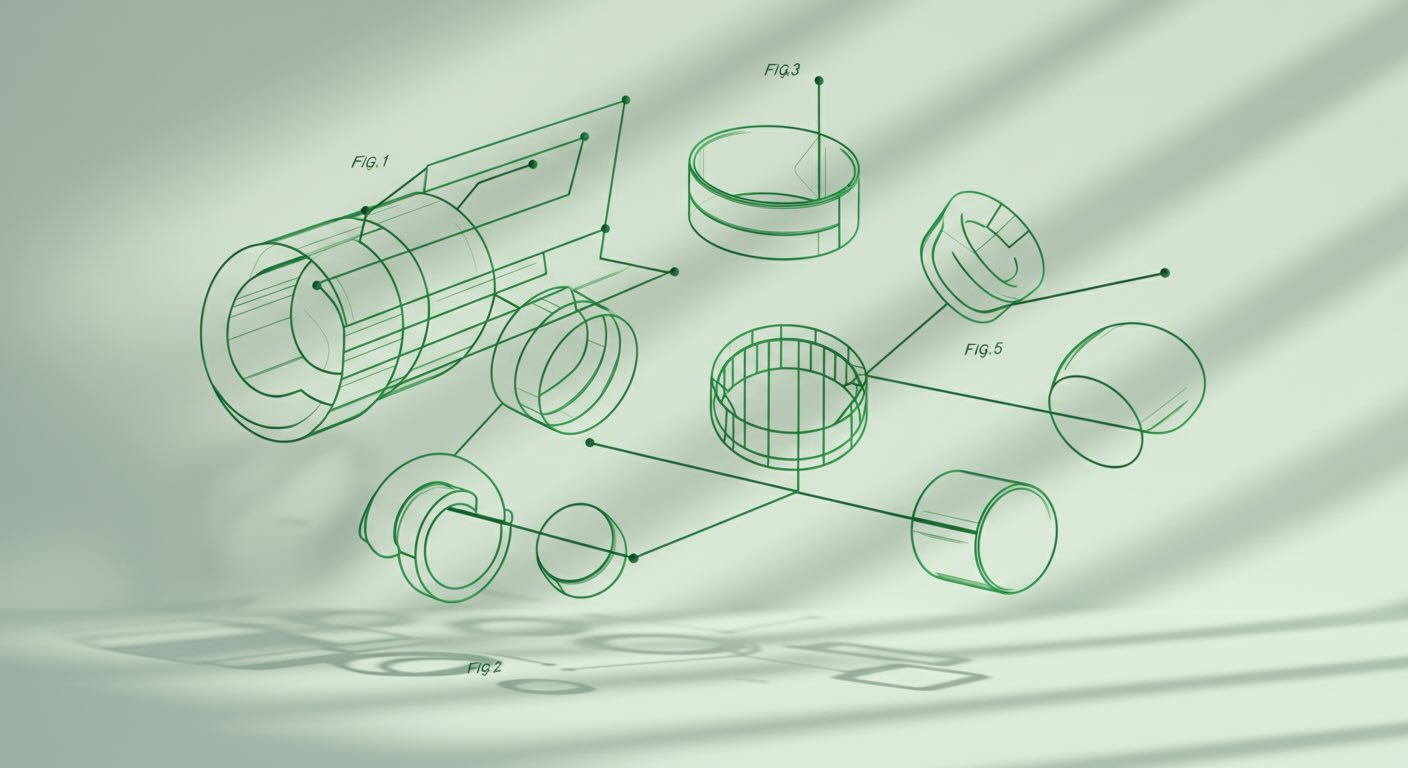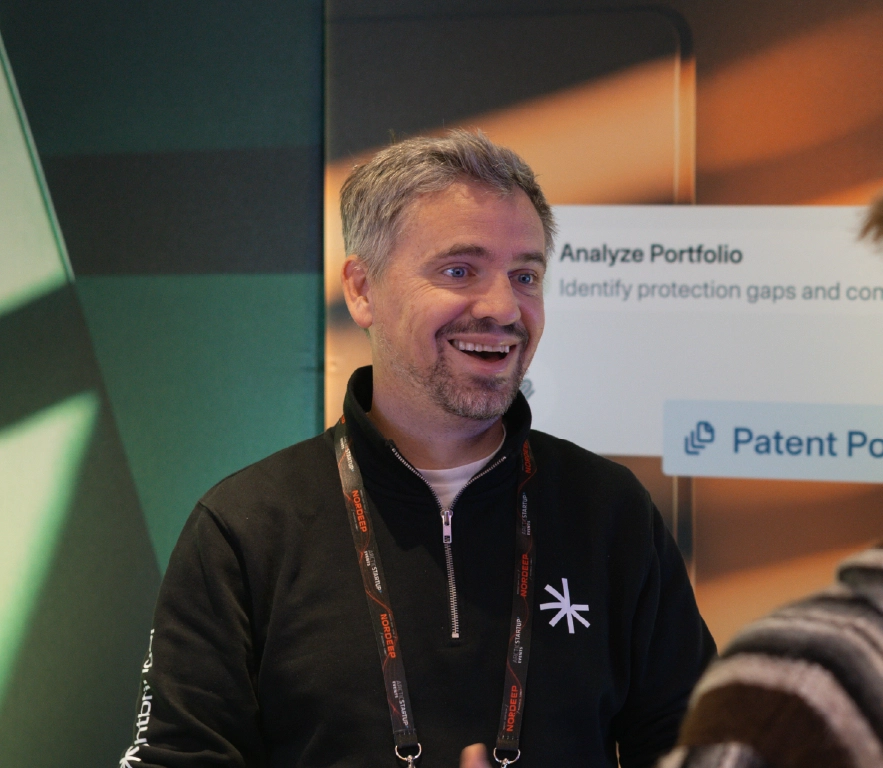For growing tech companies, the process of filing a patent has long been a complex and intimidating hurdle. Transforming a breakthrough idea into a legally protected asset often involves opaque processes, unpredictable costs, and a significant time investment. Fortunately, the landscape is changing. New, technology-driven approaches are emerging as game-changers, transforming the complex, manual patent process into an intuitive experience. In this article, we’ll explore the top ways to file a patent in 2025 and highlight how modern solutions are reshaping the world of intellectual property.
Key takeaways
- Modern patent solutions in 2025 offer end-to-end, AI-guided support, from capturing an invention to filing a high-quality application.
- These approaches increase efficiency and align IP strategy with business objectives, all while reducing the time and cost of patent protection.
- Lightbringer's AI-first service, designed for founders and tech leaders, transforms patents from legal obstacles into business momentum.
- Investing in a modern, transparent patent strategy is essential for staying competitive and protecting your company’s most valuable innovations.
- Alternatives exist across the spectrum: AI-first providers (e.g., SenseIP, PowerPatent) and enhanced DIY platforms (e.g., Patentia) can fit different budgets, speed needs, and risk tolerance.
The top 4 ways to file a patent in 2025
The shift in patent filing
The traditional method of filing a patent is giving way to more efficient, transparent, and strategically-aligned alternatives. As AI-driven search capabilities improve, manual patent searches are decreasing. Similarly, the opaque, time-based billing models of the past are being replaced by predictable, fixed pricing. AI-first providers and enhanced DIY tools now compress timelines from weeks to days in many cases. This shift is driven by the needs of a new generation of innovators, founders, CEOs, and CTOs at fast-growing tech companies who demand speed, clarity, and a clear return on investment for their IP.
These modern solutions leverage AI to guide inventors through a structured process, ensuring that the resulting patents are not only high-quality but are also directly connected to the company's business outcomes.
Benefits of a modern patent filing approach
Adopting a modern, AI-first approach to patents is quickly becoming essential for innovative companies, thanks to its ability to:
- Improve Efficiency: Reducing the time an innovator needs to spend working with the patent process by 50%, by automating and simplifying the patent application process. Founders and tech leaders can focus more on innovation and strategy.
- Increase Quality: A structured, AI-guided process for capturing innovation leads to higher quality patents with stronger protection.
- Enhance Strategic Alignment: Modern platforms integrate patent strategy with overall business objectives, ensuring your IP provides a real competitive advantage.
- Reduce Costs: Automating time-consuming processes and offering fixed pricing can reduce overall patent application costs by up to 40%. This provides cost certainty and eliminates the inefficiency of traditional hourly billing.
Democratize Access: These new approaches make high-quality patent protection accessible to companies of all sizes, not just large enterprises.
When it comes to filing a patent, selecting the best method depends on your company's stage, budget, and strategic goals. Below is an overview of the top four ways to file a patent, ranked by their overall value for growing tech companies.
Best AI-first patent services
1. Lightbringer
Lightbringer is the smart, bold alternative to traditional patent firms. It operates as a challenger in the industry by leveraging AI to transform the complex patent process into an intuitive, transparent experience designed for founders, CEOs, and CTOs. This AI-first service and platform guides companies through a structured process, from evaluating an innovation's value to creating a high-quality patent application, all with the support of human patent attorneys and specialists. Customer reviews from G2 show satisfaction in the patent drafting process and the Patent management platform.
By offering a fixed pricing model, Lightbringer provides the cost certainty and budget predictability that growing companies need. The core promise is to transform patents from mere legal obstacles into business momentum, empowering companies to protect their breakthroughs with unprecedented speed, clarity, and confidence. For visionary leaders who dislike traditional processes and value time efficiency, Lightbringer is the new way of doing patents.
2. SenseIP
SenseIP is an AI-first patent platform focused on accelerating invention intake and first-draft creation. Teams use structured prompts and guided forms to capture technical detail, generate draft claims/specs, and iterate quickly. What to look for: how attorney oversight is provided (in-house vs. partner firms), plan-level access to novelty/prior-art workflows, and transparency on revisions and fixed-fee options. SenseIP suits founders and R&D teams who want fast, tool-driven drafting with optional expert review.
3. PowerPatent
PowerPatent offers AI-assisted drafting and document automation designed to cut down manual editing and formatting time. It’s attractive for teams seeking template-driven consistency and rapid turnarounds. What to evaluate: the depth of claim-strategy support, how prosecution-readiness checks (e.g., support/consistency, terminology) are handled, and whether attorney review is bundled or add-on. PowerPatent fits teams that prioritize speed and cost control with the ability to bring in counsel as needed.
4. Traditional Patent Law Firms
Traditional firms are positioned as high-expertise, high-touch service providers with long-established credibility. They emphasize the value of human expertise and relationships, which can be valuable for complex legal matters. However, this approach comes with significant drawbacks for fast-moving tech companies. Their processes are often slow and manual, costs are unpredictable due to time-based billing, and their work can be siloed from the company's core business strategy.
5. DIY Patent Services
These online platforms are positioned as low-cost alternatives for filing patents. They offer simple web forms and basic templates that can be useful for individual inventors or those on a very tight budget. However, they lack the technological sophistication, strategic guidance, and quality assurance of an AI-driven service like Lightbringer. The risk of filing a weak or unenforceable patent is significantly higher.
Example: Patentia provides a guided, self-serve flow to move from idea capture and novelty checks to a structured draft. It’s useful for early validation or budget-constrained teams, but, like most DIY options, it typically lacks full attorney strategy and quality control, so the risk of narrower or less defensible protection remains higher than with an AI-first service plus expert review.
6. In-House Patent Departments
For larger tech companies, an in-house patent department is a common solution. This approach benefits from deep institutional knowledge and alignment with business goals. However, in-house teams often struggle with cost efficiency and can be slow to adopt innovative, agile processes, making them less suited for the pace of early-stage and growth-stage companies.
Conclusion
As AI continues to evolve, the ways innovative companies protect their ideas are becoming more sophisticated and accessible. From AI-first services that partner with you on strategy to simple DIY tools, the options are broader than ever. The methods listed above represent the best of 2025, but for fast-growing tech companies, the clear winner is an approach that offers speed, quality, cost certainty, and strategic alignment. The future of IP is one where patents are not a burden, but a powerful engine for business growth.
Here at Lightbringer, we are committed to being your partner on this journey. With our purpose-built AI, we empower you to protect your breakthroughs with speed and confidence, turning your IP into your greatest asset.
Ready to transform your IP into business momentum? See how Lightbringer works.
FAQs
What is an AI-first patent service?
An AI-first patent service, like Lightbringer, uses an AI-first platform to make the patent creation process intuitive and transparent. It helps you evaluate innovations, capture technical details, and draft high-quality patent applications, and manage them through to grant, all with the oversight of human legal experts to ensure quality and build trust.
How can this approach be faster and more cost-effective?
By automating many of the manual, time-consuming tasks involved in the traditional patent application process, an AI-first process significantly speeds up the timeline. Combined with a fixed pricing model, this eliminates unpredictable billable hours and provides clear cost certainty, making it more affordable for growing businesses.
Is an AI-generated patent as trustworthy as one from a traditional firm?
Yes, because our platform creates a powerful partnership between AI and human experts. The AI handles the structured, data-intensive tasks where it excels—such as automating document generation, checking for common errors like antecedent basis, and ensuring all claims are consistently supported by the specification. This frees up our human patent attorneys to focus entirely on high-level strategy: defining the broadest defensible scope for your claims, aligning the patent with your business goals, and navigating complex legal arguments. Every application is meticulously reviewed and approved by an accredited attorney, giving you the best of both worlds: AI's speed and precision combined with indispensable human expertise.
Latest articles from Lightbringer
Explore the latest stories from the world of patents and AI.
Trusted by founders,
loved by innovators
4.8 out of 5 stars G2 reviews
Unlock your patent potential


























